This section contains entries about our botanizing in Baja California written for the UC BEE (Oct 2012 to Aug 2021)
and The UC Hive (2022-), monthly newsletters for volunteers and staff of the UC Berkeley Botanical Garden.
Click on any photo for a larger image.
BEE JUN 2018
Los Comondús to La Purísima and San Isidro
This month, I continue where we left off on our February trip to the west coast of the Baja California peninsula that began in the April issue (left map).
From the small palm oases of San Miguel and San José de Comondú, we retraced our route back to Hwy 53 at Ej. Francisco Villa then turned northward towards La Purísima (right map).

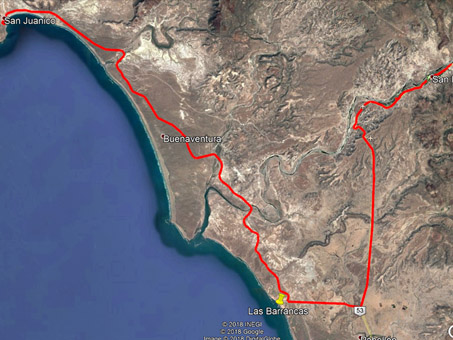
Regional map (L) and area map for this issue (R). Click to enlarge.
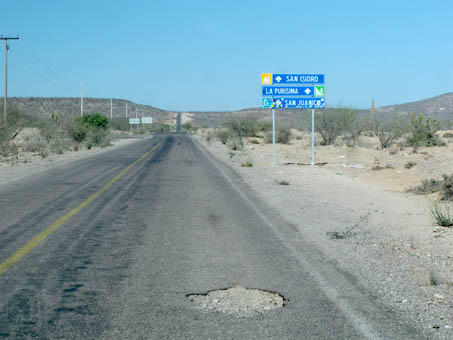
There was a lot of long straight road on the 60 km (36 mi) trip. And a few nasty potholes.
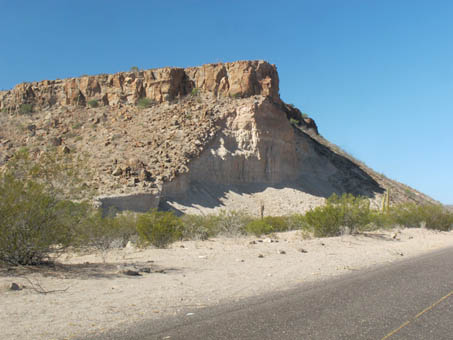
A look into the geology of the numerous mesas in the area: ancient sea beds capped with lava and volcanic debris.
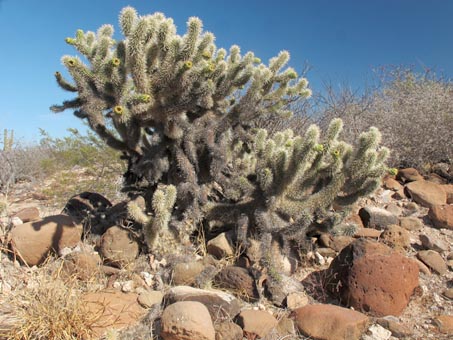
Ciribe or Southern Teddy-Bear Cholla (Cylindropuntia ciribe) is an endemic cacti found on the Pacific side of the Sierra de la Giganta between about San Ignacio and the Comondús.
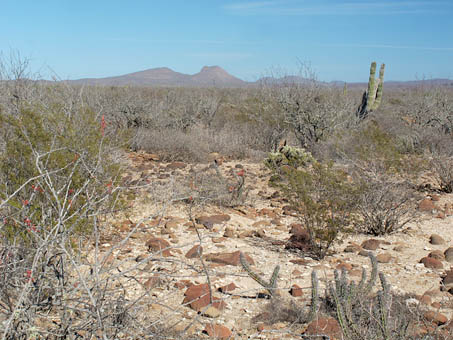
Vegetation here is similar to what was seen last month on the way to the Comondús: lots of grayish, leafless shrubs (Palo Adán, Fouquieria diguetii; Ashy limberbush, Jatropha cinerea; Little-leaf Elephant Tree, Bursera microphylla); green Creosotebush (Larrea tridentata); columnar cacti like Cardón (Pachycereus pringlei) and Pitahaya agria (Stenocereus gummosus); and lots of it covered with grayish-green Tillandsias and lichens. With the Ciribe and the occasional flower.

Sweeping view (this image and one to right) as we begin the descent into the arroyo.
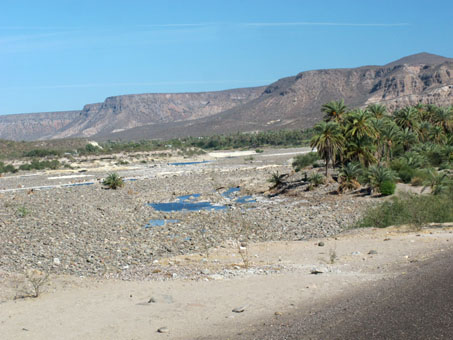
Coming into La Purísima. The last few tropical storms have scoured out the arroyo and eroded a lot of the bank, obliterating whole orchards, and leaving just bedrock with pools and streams (center of image) image.
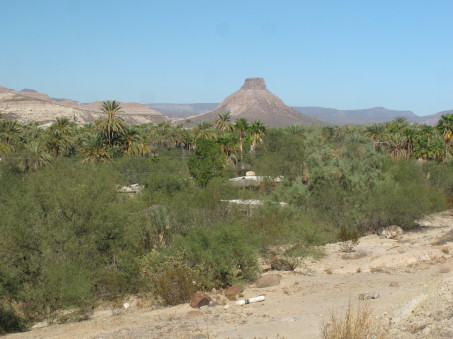
There are houses and streets somewhere in all that green. The knob in the distance is known as El Pilón.
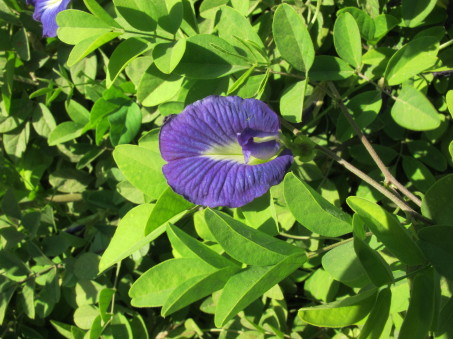
This vine, Butterfly Pea (likely Clitoria ternatea, Fabaceae), was spectacular on the fence of Otho´s Restaurant, the only eatery in town other than the B & B.
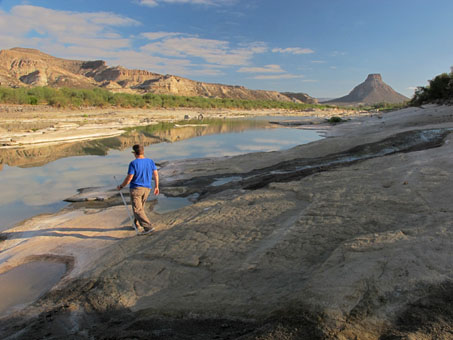
We headed down to the arroyo early in the morning.
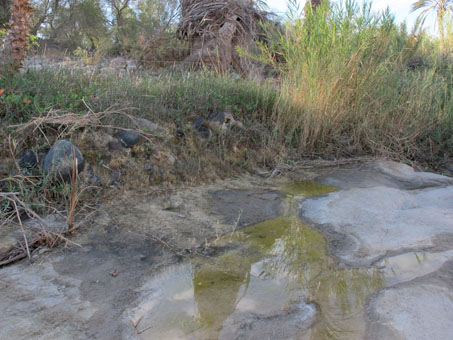
Water could be seen seeping out of the arroyo banks, feeding the pools.
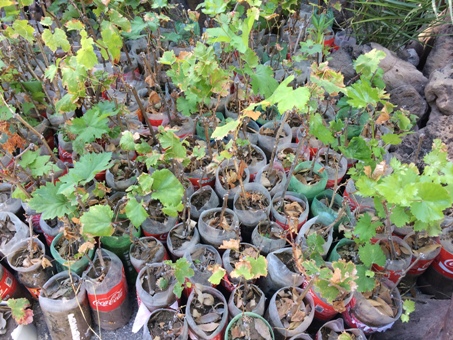
Lily and Lalo, owners of the B & B have been working on reviving the Lilia´s family tradition: wine making. Seedlings of a number of different grape varieties are growing, including the original Misión, brought to the New World by the Catholic missionaries.
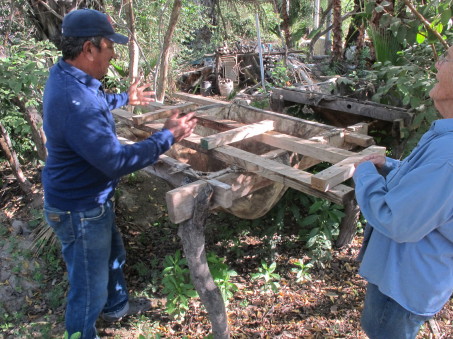
Lalo describes how the grapes are stomped in a wooden box placed on this frame, and the juice is captured in a cow skin basin.

Inside the bodega, we saw the wooden box with holes used to extract the grape juice and the wine barrels.

Ripening dates still on the trees. We learned that there are several varieties grown in different parts of BCS: medjool (or "Indio", named after the California town where they get the seedlings), Deglet, Zahidi (too dry & fibrous), and Khadrawi (my favorite & much better than the local Medjools).
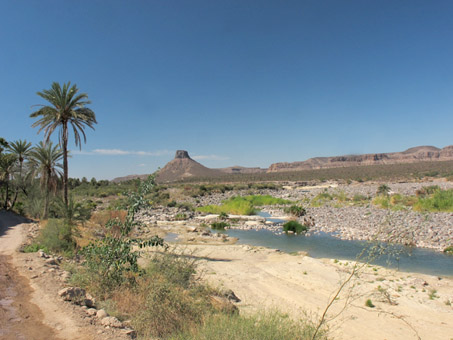
Heading east past La Purísima, we passed through the town of San Isidro, then continued a couple of kilometers to see the sights. Here is the view of El Pilón after we turned around and headed west again.

It looks like this pump (lower center) brings water up from the river...
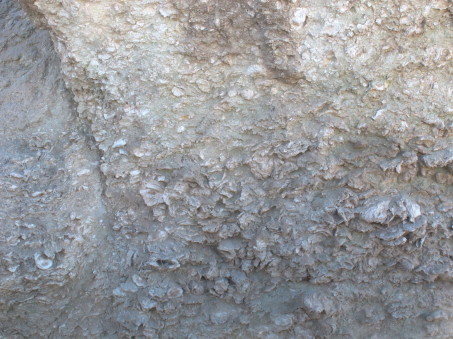
...is cut through a bed of fossilized seabed, full of ancient shells.
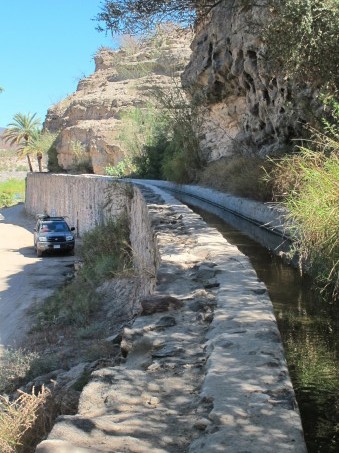
The channel was lined with cement.
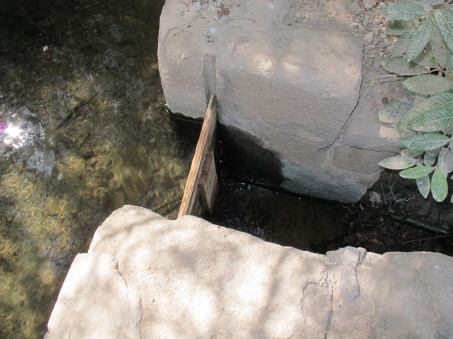
A small wooden slat can be raised to allow water to run down a rock chute, through a pipe under the road, & into the field across the road.

Heading towards a series of mesas in the distance. Vegetation is naturally sparse but also there is overgrazing and clearing for fields.
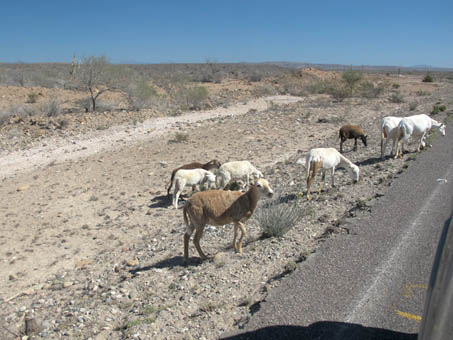
One of the hazards along all of the peninsula´s roads: goats. They also change the vegetation, eating practically anything, thorns or not.
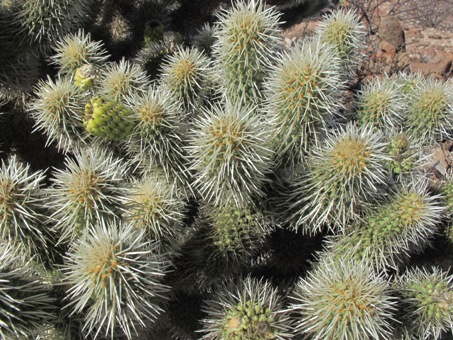
Southern Teddy-bear Cholla looks so deceptively cute, fuzzy and touchable. Plants are low and compact, generally around a 1m high.

The view looking west into Arroyo La Purísima from the highway just before beginning the descent into the arroyo and the town. The arroyo winds its way to the coast where it meets the Pacific as Estero San Gregorio. There was plenty of fresh water in large pools and small streams along the length visible to us.
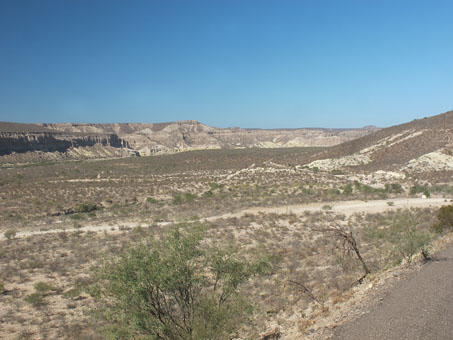

None the less, orchards of date palms (Phoenix dactylifera), fan palms (Washingtonia robusta) and fruit trees still line the southern bank of the arroyo. Most of the town is on a small rise above the arroyo bottom.
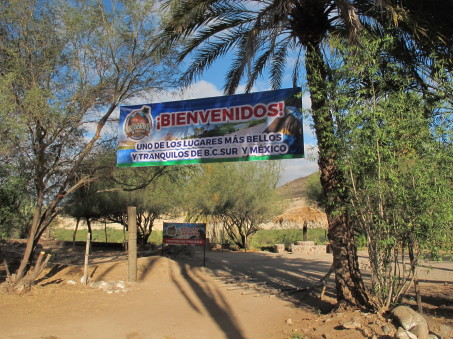
The camping area of the Cabañas La Purísima Bed & Breakfast where we lodged. The grounds of the B & B stretch from the highway to the river and include orchards, vineyards and a huge garden.
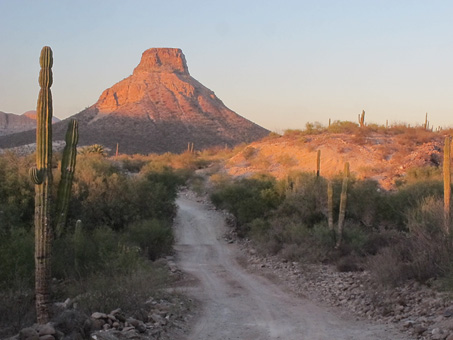
El Pilón, the most recognizable landmark of La Purísima, at sunset.
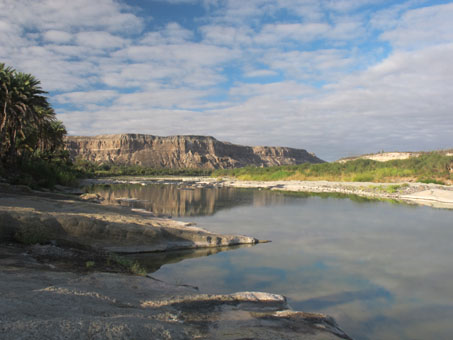
The water was still and crystal clear.
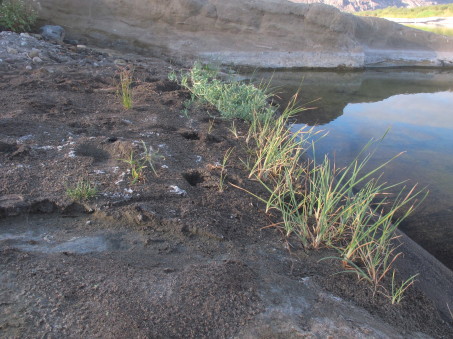
The vegetation was sparse, young, and similar to that seen in the Mulegé oasis, mainly: Royal sedge (Cyperus elegans), Bulrush (Schoenoplectus americanus) and Cattail (Typha dominguensis).

The bodega, or wine cellar of Viñedos Don Modesto. Lily´s grandfather started making wine and her father followed suit. She hopes that recovering the family tradition will some day allow her grandchildren to carry on the business.
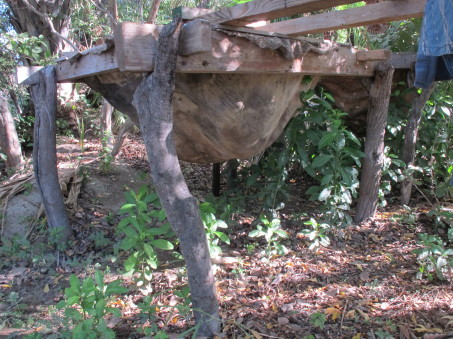
The juice sits out for 4-5 days to start fermentation, before being stored in the bodega in open wooden barrels until the process ceases. The barrels are then sealed & allowed to age before being bottled.
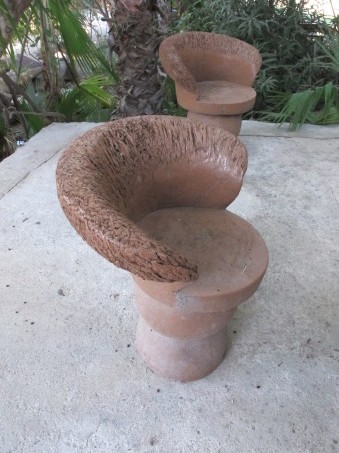
Interesting chairs, each carved from a single palm trunk. Note the vertical, fibrous nature of the back.
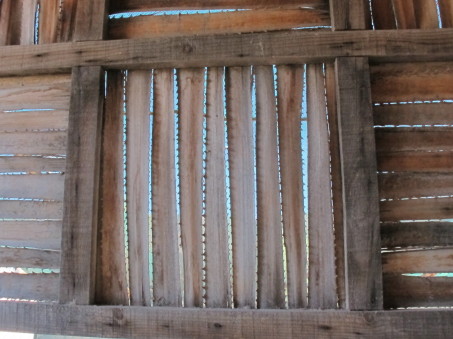
Another use of palm petioles, this time as a sunshade at Otho's Restaurant (see April for more on palm leaf use). The builder didn't bother to remove the teeth, which adds to the character of the work. Parts of the restaurant walls were also built in this manner.
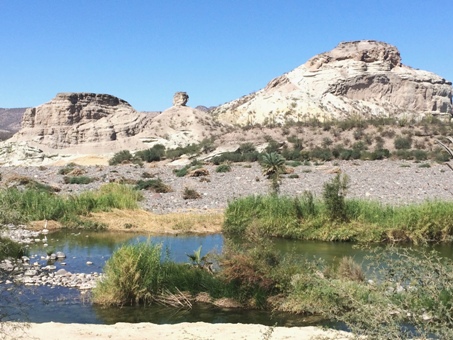
An mini oasis in the arroyo bed. Small fan palms, bulrush and cattails are the most obvious here.
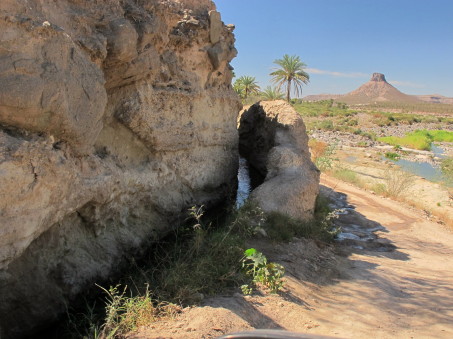
...to feed this amazing example of an irrigation canal. The first part...
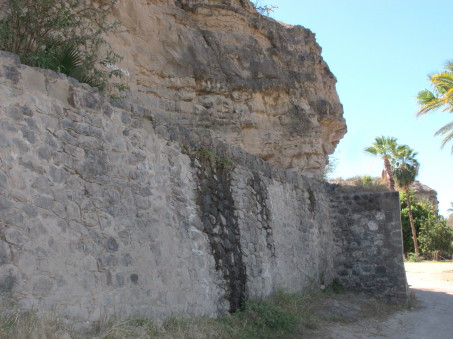
It then continues as a massive 3-4 m H x 60 cm W (10-12 ft x 2 ft) cemented rock wall. This is the only section where we noticed a leak.
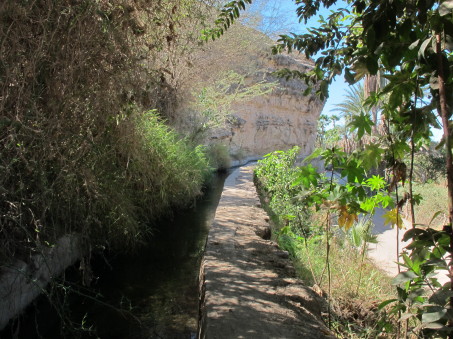
These irrigation canals are known locally as acequias.
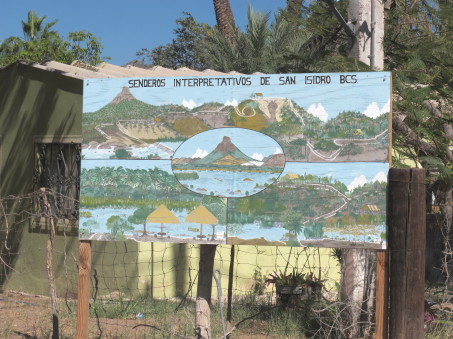
On the way back to La Purísima & the highway, we saw this sign for the interpretive trails around the dam, the old irrigation canals, and El Pilón. Definitely on our list for our next visit.
San Juanico — February 12-13, 2018

From La Purísima, we retraced our route 20 km (12 mi) south to the junction heading west to Las Barrancas, a tiny fishing village.
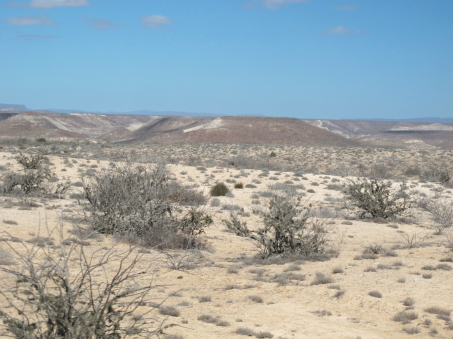
We passed through a very xeric landscape, the soil ancient seabed.
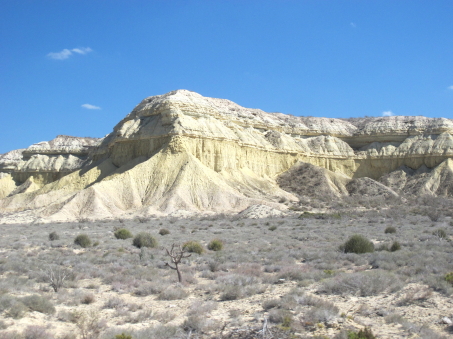
Eroding limestone mesa, the soil very yellow in the middle.
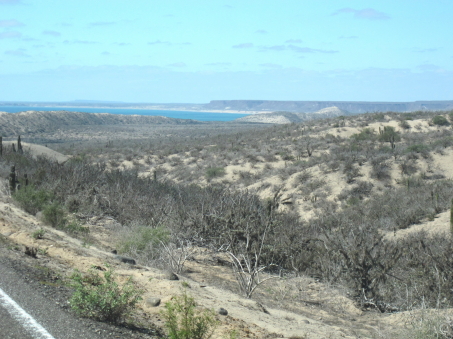
The road climbed at one point and as it turned, we caught our first glimpse of the long sweeping Bahía San Juanico.
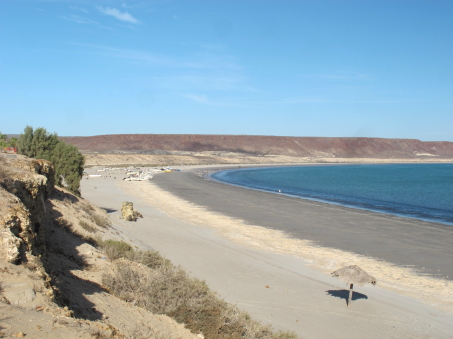
San Juanico beach. It´s a favorite surfing spot. The town is quite small, where the foreign population probably outnumbering the locals.
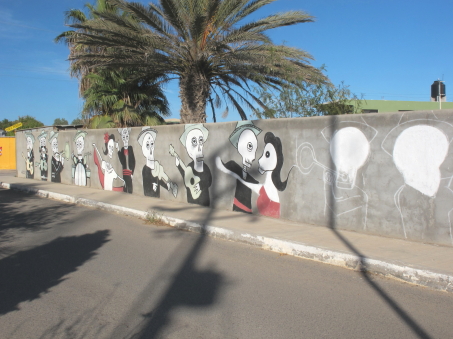
Festive artwork, still in process, lines a wall on the main street.

This colorful mural takes up the entire wall of a small building.
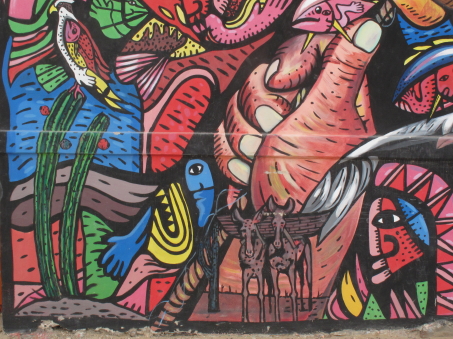
...and show the peninsula´s rich natural and cultural history.
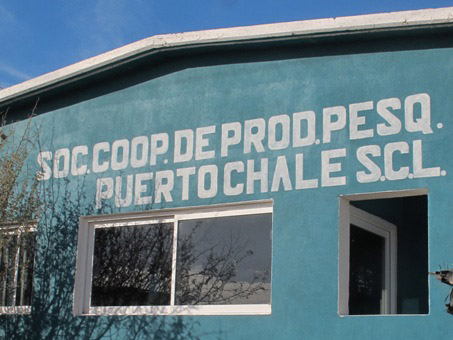
There is a strong fishing cooperative in town. Much of the seafood on the Pacific, like abulone, lobster, and sea urchins bring high prices on the Asian market. I happened to be walking by when they were working.
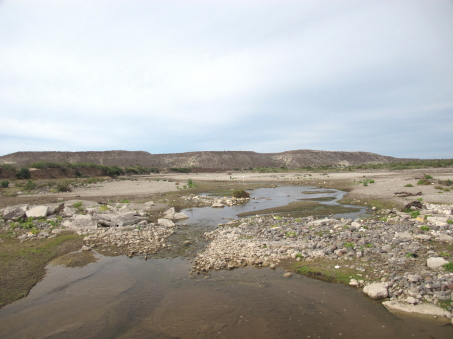
Heading south again. Another watercourse that feeds the Estero San Gregorio.
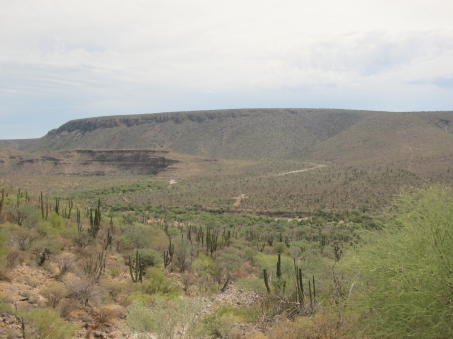
Heading back home across the Sierra La Giganta between Ciudad Insurgentes and Loreto, I was very happy to see green once again. The difference in vegetation is striking. The many tones of green speak to the diversity.
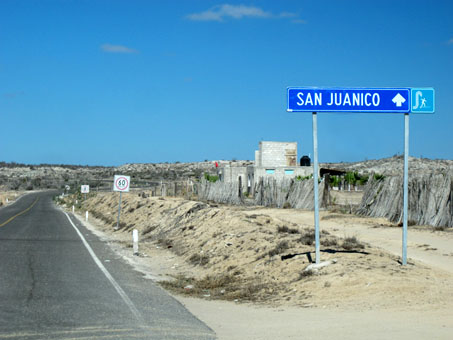
Then we drove northward about 70 km (56 mi) on the fairly new paved road to San Juanico.
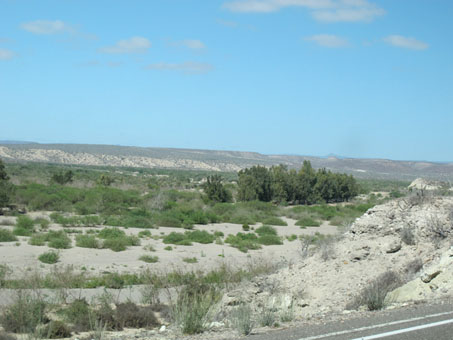
We passed through several arroyo outlets. In the distance is part of the San Gregorio estuary, the end of Arroyo La Purísima.
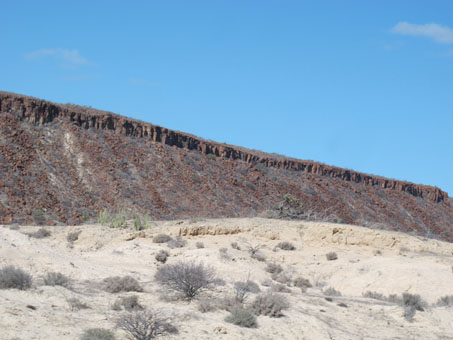
Another lava-capped mesa, close to San Juanico.

Xeric landscape. Many plants sported a dense covering of lichens.

Large vacation homes and a "resort" have taken over the point. Tourist amenities are few: a couple of small hotels, stores, and restaurants.
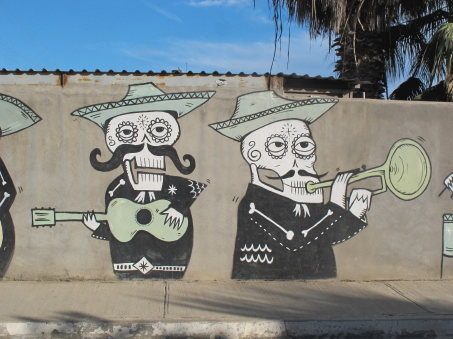
This style of traditional Mexican art makes light of death while honoring the dead.
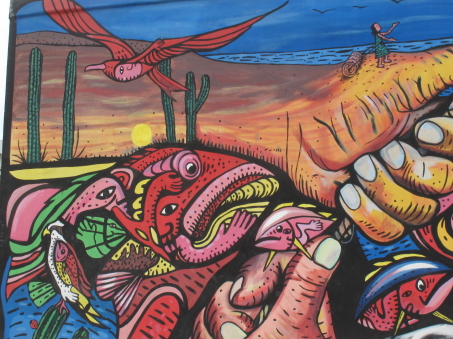
The whimsical details are impressive...
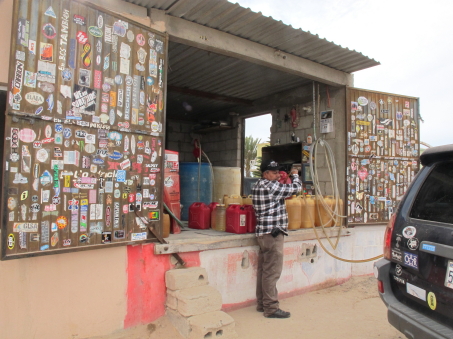
The local gas station. Premium prices, but worth a few extra dollars to not run out of gas in the middle of nowhere.
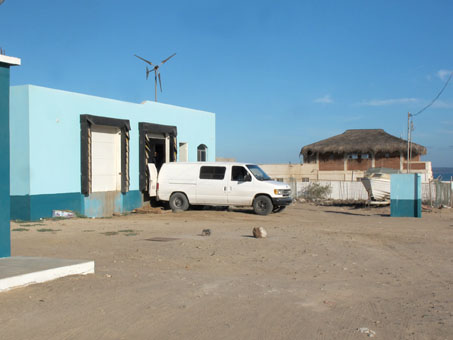
Curious about what the current catch was, I stopped to ask. I was invited in to the warehouse to see the large plastic bags of octopus (pulpo) that were being loaded into the van along with ice for transport north.
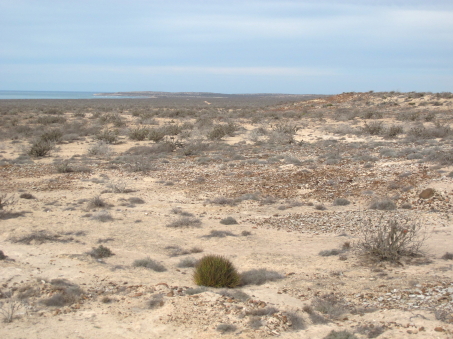
Low, xeric vegetation closer to the coast. The central blob is Espadín (Euphorbia ceroderma). The small gray plants are Yerba reuma (Frankenia palmeri). There is also scattered patches of small boxthorns (Lycium sp.) and Palo Adan (Fouquieria diguetii).
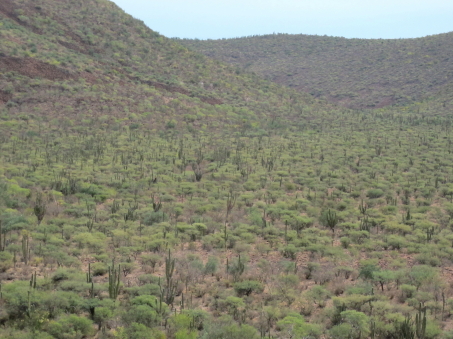
The leguminous shrubs and trees appear dense and very leafy. Typical species include: Palo blanco (Lysiloma candidum), Gatuña (Mimosa distachya var. distachya), Palo brea (Parkinsonia praecox), Palo verde (Parkinsonia florida), Palo hierro (Prosopis palmeri) and Palo Chino (Senegalia peninsularis).
We had a wonderful trip and could see that the areas we visited, especially the oasis towns, required much more time to fully explore. We look forward to a longer visit in the upcoming year when we return to Baja California. Until then, hasta la próxima…
Debra Valov—Curatorial Volunteer































































